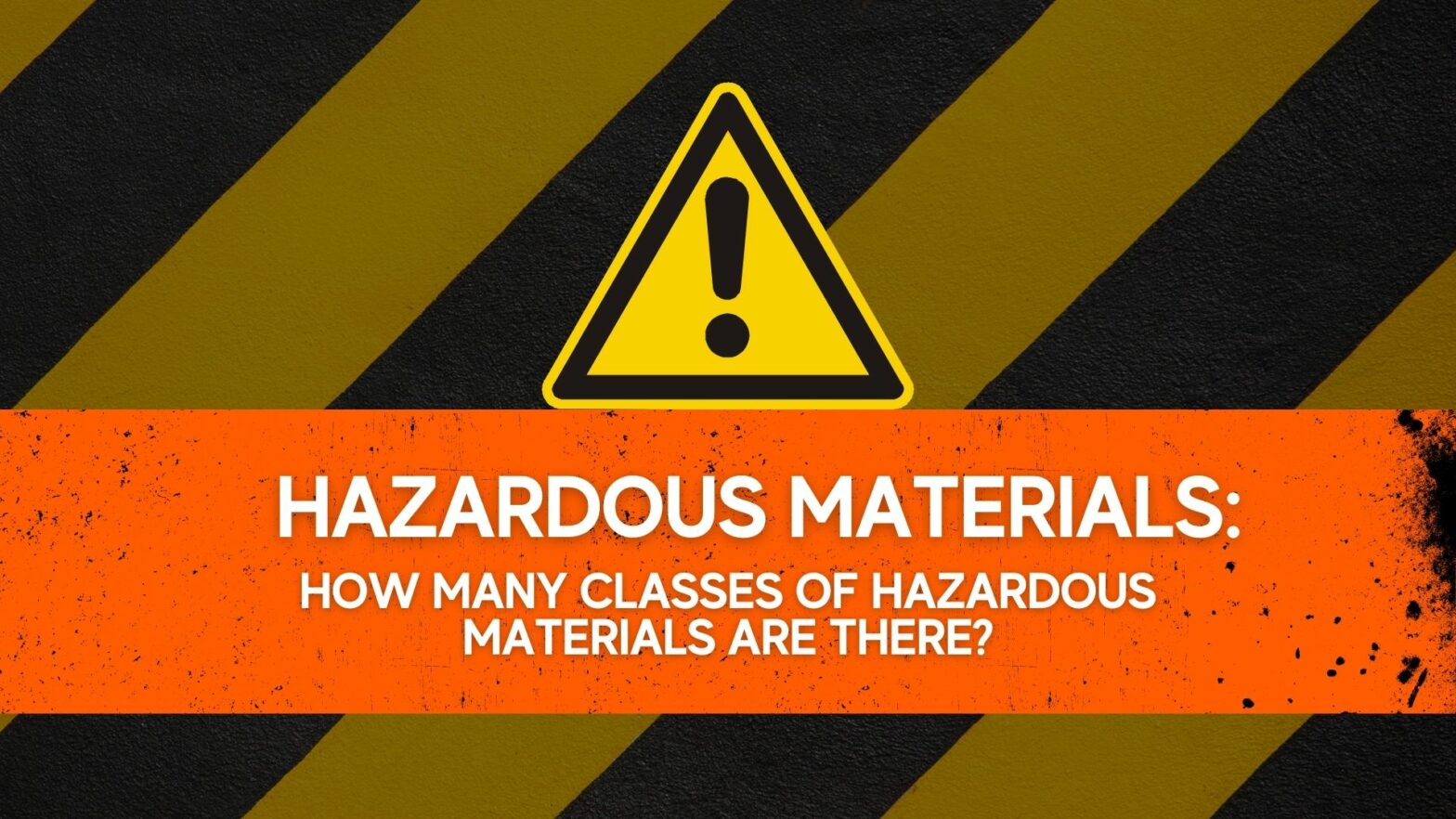When working in a hazardous area, it is essential to understand the different classes of hazardous materials to prevent incidents. At Intrinsically Safe Store, we offer certified equipment that can help you manage these risks more efficiently.
You probably have seen in the industry field signs like this one:

These signs are for identifying hazardous materials it indicates that the area is dangerous and requires safety measures. However, do you know how these classifications work? The classification is made into nine categories, let’s analyze each of them.
Class 1
Explosives: This category has six sub-categories that classify the level of hazard of the material.
- Mass explosive hazard
- Projection hazard
- Fire hazard
- Minor explosion hazard
- Very Insensitive With Mass Explosion Hazard
- Extremely Insensitive
Some examples of these materials are fireworks and TNT. Therefore, you will identify this category by those signs below:
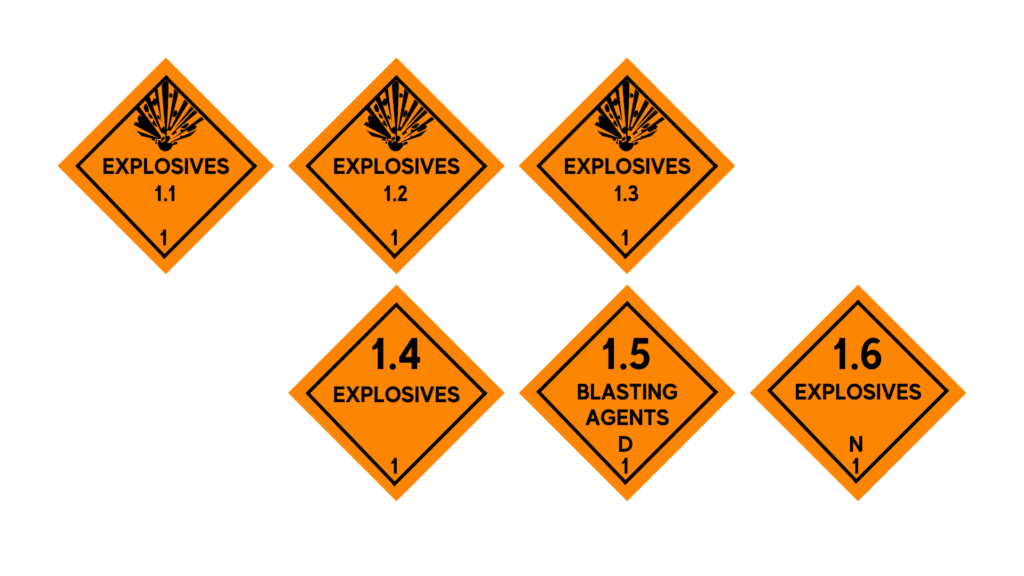
Class 2
Gases: Here we have three sub-categories to classify the level of hazard of the material.
- Flammable gases
- Nonflammable gases
- Toxic gases
So, you can identify each of those by the signs below:

Class 3
Flammable and combustible liquids: This material presents a hazard when the source of ignition ignites the vapors. Therefore, some examples of this material are:
- Gasoline
- Ethanol
- Alcohols
- Ethylene glycol
- Engine oil
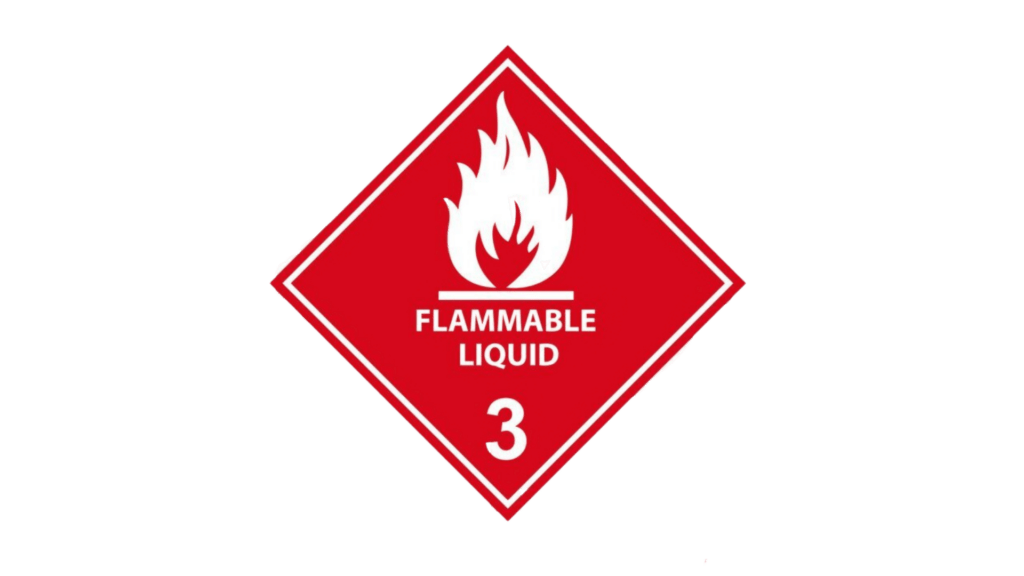
Handling flammable liquids safely requires not only knowledge but also the right tools. In our catalog, you’ll find explosion-resistant barriers and devices for hazardous environments.
Class 4
Flammable solids: This category has 3 sub-categories.
- Flammable Solids
- Spontaneously Combustible
- Dangerous When Wet
Some examples of these kinds of materials are oily fabrics, processed metals, and match sticks. Moreover, below are the signs that identify this hazardous material:
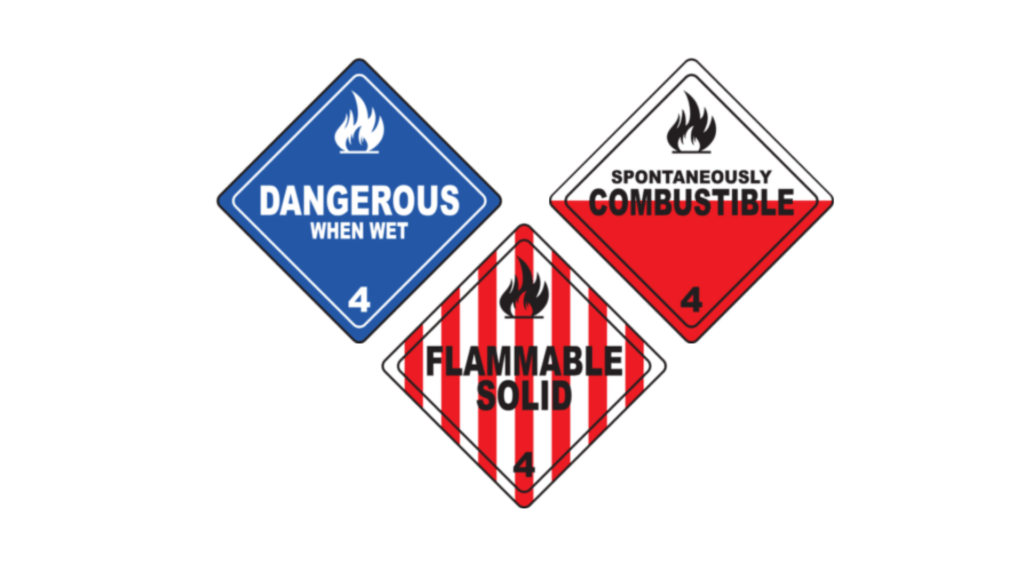
Class 5
Oxidizing Substances, Organic Peroxides: This material is not combustible but it can contribute to increasing combustion in others materials. Meaning that also need to be rated as a hazardous material. In addition, this sign will help you to identify this material presence:
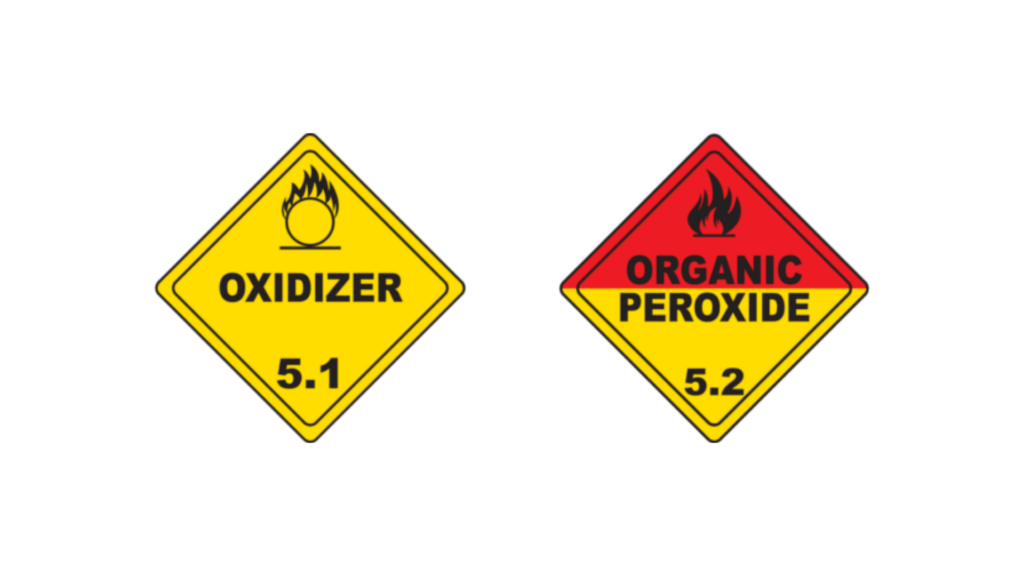
Class 6
Toxic and Infectious Substances: Here we have different classifications for these similar materials.
- Toxic substances: more liable to cause lethal harm or serious injury to human health.
- Infectious substances: more liable to infect by some pathogenic influence.
You will identify this hazardous material by the following sign:

Class 7
Radioactive: This is a very known material and we all acknowledge its dangerousness. This material requires more measures of safety than any other. But you will see its sign at some medical centers cause some radioactive materials are used in x-ray equipment and even in our daily routine.
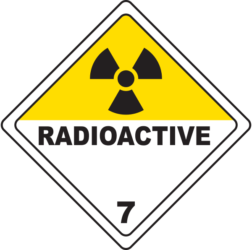
Class 8
Corrosives: For example of corrosive materials are batteries, sodium hydroxide, and sulfuric acid. Acids can provocate a chemical reaction of melt or damage organic material, also, you will see it in places where is this sign:
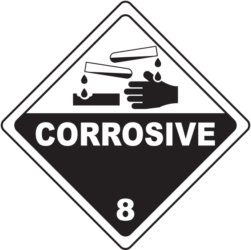
Class 9
Miscellaneous Hazardous Materials: This category embraces all the materials that can’t be rated in the previous eight categories. Mostly is used to list materials that present environmental risks and require care during transportation. For example:
- Lithium batteries
- Elevated temperature substances
- Asbestos
So you will identify this material by the sign below:
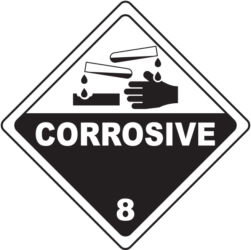
Safety Measures
Now that you how many classes of hazardous materials are there, it’s essential to know how you can control the hazard. At Intrinsically Safe Store, our main goal is to provide intrinsically safe solutions to all the hazardous areas. Indeed, our catalog has a variety of equipment and barriers that will help you to control the hazard and improve intrinsic safety. Finnaly, talk to one of our experts, we are ready to help you!


























